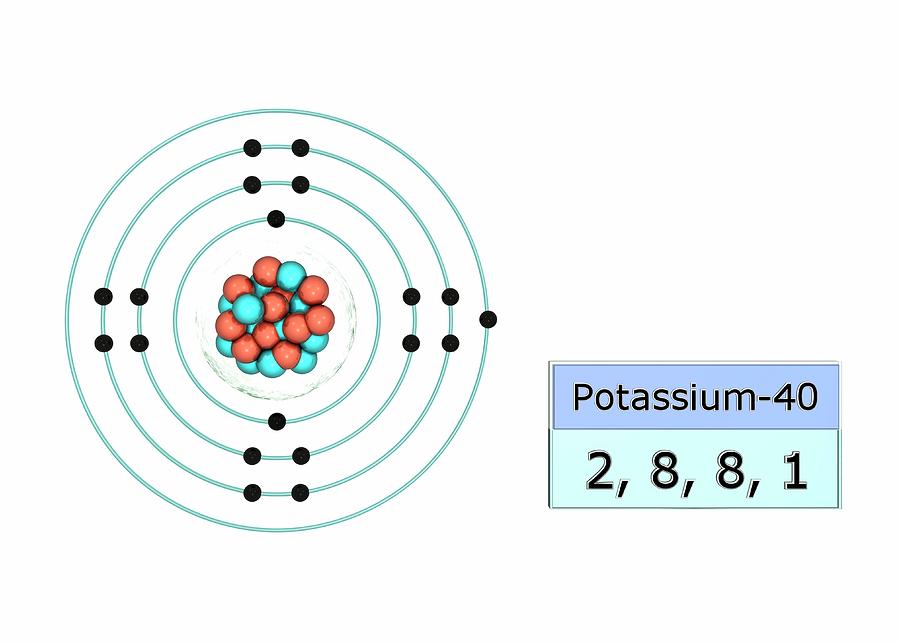
Now, let us move forward to know the other properties of potassium bromide.įor your convenience, here are some physical properties of this salt in a nutshell. Till now, you learned some common characteristics of this ionic salt. This way, it will be easy to understand the reaction between potassium cation and bromine anion, here is the Lewis dot structure of KBr. Also, this diagram can help you to understand how a single pair of electrons can exist inside a molecule. By this electron-dot diagram, you can understand the electron arrangement of individual atoms in a molecule. Moreover, to understand the electron representations in the valence shell, you need to learn the Lewis structure.

For common representation, the chemical structure of potassium bromide can be expressed as below. This structure is formed by one potassium cation surrounded by six bromine anions and also vice versa. The crystalline structure of this salt is precisely octahedral. Its structure is created by a single cation K + and a single anion Br. This means, when put into water, it can be quickly disassociated into individual ions and disappear. This compound is completely water-soluble. Sometimes this may cause vomiting as a general effect of every potassium salt. Notably, potassium bromide can irritate the mucous membrane of the gastric if consumed in high concentrations. This concentration-wise change of taste occurs because of the characteristics of potassium ions. However, if you can increase the concentrations gradually, KBr tastes bitter and eventually becomes salty. However, this bromide salt tastes sweet in dilute aqueous solutions. Taste-wise, potassium bromide is pungent bitter with saline flavor. This salt can appear as colorless crystals, crystalline powder in white or white grains under standard temperature and pressure. It is also known as Kalii bromidum, Tripotassium tribromide, and bromide salt of potassium. KBr or Potassium bromide is an ionic salt, completely disassociated, and has a value of pH 7 in an aqueous solution. Now, the first question that can arise in your mind is “what is potassium bromide”. The following discussion is an in-depth discussion about KBr. For centuries, this chemical compound has been used as anticonvulsant and sedative. Potassium bromide has an immense contribution to medical science. The chemical equation of this reaction is 🡪 2 K + Br 2 = 2KBr. At room temperature, potassium reacts with bromine, and by synthesis, this compound is formed. Potassium bromide is a chemical compound of the element potassium or K and bromine or Br 2. Phenom., 1980, 21, 275.In this content, you will find all important information about potassium bromide uses, its properties, and production. Mårtensson, "Core-Level Binding Energies in Metals," J. Lide, (Ed.) in Chemical Rubber Company handbook of chemistry and physics, CRC Press, Boca Raton, Florida, USA, 81st edition, 2000. Ley, Eds., Photoemission in Solids I: General Principles (Springer-Verlag, Berlin) with additional corrections, 1978. Burr, "Reevaluation of X-Ray Atomic Energy Levels," Rev. They are tabulated elsewhere on the WWW (reference 4) and in paper form (reference 5). The data are adapted from references 1-3. I am grateful to Gwyn Williams (Jefferson Laboratory, Virginia, USA) who provided the electron binding energy data. The binding energies are quoted relative to the vacuum level for rare gases and H 2, N 2, O 2, F 2, and Cl 2 molecules relative to the Fermi level for metals and relative to the top of the valence band for semiconductors. All values of electron binding energies are given in eV.

1967, 47, 1300.Įlectron binding energies Electron binding energies for potassium. These effective nuclear charges, Z eff, are adapted from the following references: Effective nuclear charges for potassium 1s


 0 kommentar(er)
0 kommentar(er)
